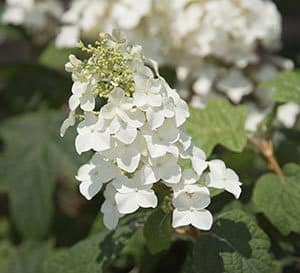Were your daffodils confused this winter? Did your Rhododendrons bloom in December? While roses in winter may be a welcomed sight, many gardeners were concerned about what all this blooming and warm weather meant for the coming growing season. Luckily, plants have dealt with weather extremes for millennia and a wintertime frolic is not cause for alarm.
Off-season bloomers fall into two groups: summer- and fall-blooming perennials and shrubs that never shut down for their winter nap, and spring bloomers that started flowering way ahead of schedule. In both cases, we may expect to see some minor side effects, but overall plant health will not be impaired.
Spring Bloomers
Across the nation, plants as varied as phlox, forsythia, cherries, and azaleas put out blooms in December. In most cases, a handful of individual flowers on each plant opened, while the remaining flower buds stayed closed. The buds that opened early will not bloom again – those flowers are spent. But any buds that did not open early were still there, awaiting spring’s return.
If you looked closely earlier in the year, you could see the flower buds, shut tight against the winter cold. Some of the buds may have been damaged when the weather shifted from warm to cold, but others made it through the freeze. Now that spring has arrived, you may have fewer blossoms than in most years, but not all hope is lost. In areas that had a gradual shift in temperature, there will still be plenty of flowers. Where temperatures shifted rapidly, more bud damage should be expected, which translates to fewer blooms. But, it is not likely that all blossoms are lost. And we sure did have a colorful winter!
Daffodils
Gardeners noticed daffodils pushing their foliage up all across the country. Any greenery that made its way above ground was surely killed back when the cold weather hit. While the plants did use up some reserved energy in the process, it is not uncommon for daffodils to make too early an appearance and the plants, with their plump bulbs, are quite able to handle the stress.
An Autumn Encore
Hydrangeas and Asters continued to bloom well into what would normally be considered winter. Unlike springtime bloomers, these plants were not tapping into next season’s flowering potential. The concern with these plants, as well as woody spring-blooming shrubs, is potential damage to vegetative buds and young branches that didn’t properly harden off before the cold set in. Pay close attention to trees and shrubs now that it’s spring and look for signs of damaged wood. Now you may prune out the damaged tissue. Late-season growth is most susceptible to damage as it entered the winter in a tender state.
Chilling Time
Something that gardeners may not anticipate is the failure of certain bulbs and fruit trees due to a lack of adequate chilling time. Many plants require a period of rest at cold temperatures, typically below 45 degrees F, to allow flower buds to open the following spring. The exact number of hours varies from one plant to another. When warm winter temperatures prevent the required accumulation of chilling hours, the plants will fail to bloom. Apples, cherries, peaches, and tulips are among the plants that have chilling requirements. For future plantings, southern gardeners can select varieties with shorter chilling requirements to limit the impacts of warm winter weather.











